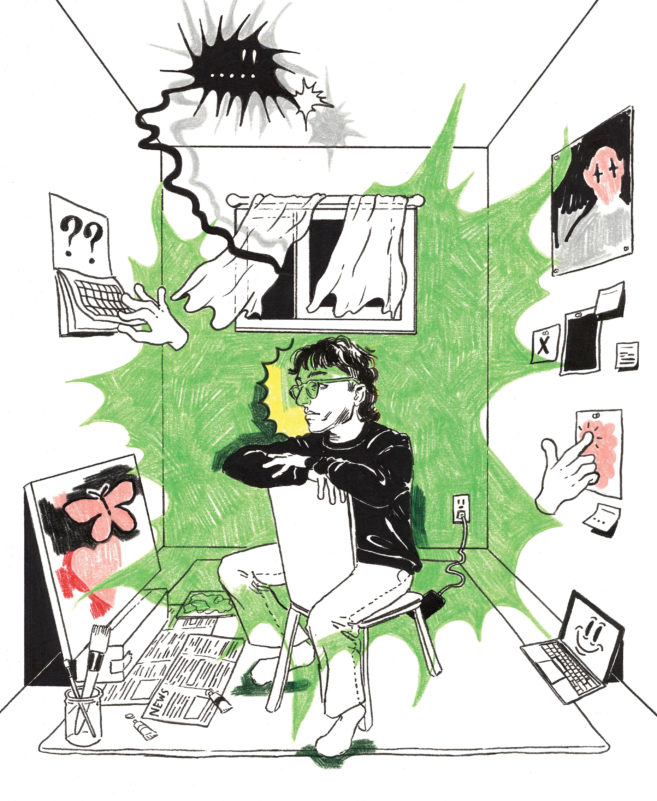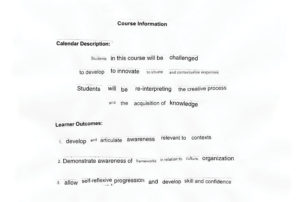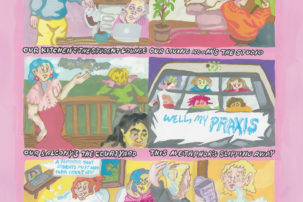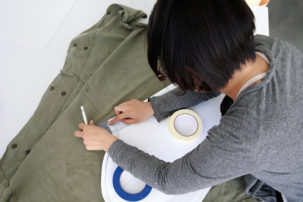Some 400,000 Canadians over the age of 25 have completed post-secondary studies in visual and performing arts programs, according to Statistics Canada. This is a staggering number, but not an entirely surprising one—other Stats Canada findings show that artists, as a group, routinely exhibit a higher level of educational achievement than the national labour force.
Yet the art schools of today are almost unrecognizable from their earliest iterations, which opened in Canada beginning in the late 1800s. As artistic practices shift, increasingly integrating technology and interdisciplinary approaches, it makes sense that art schools reflect, or anticipate, these changes as well. At some schools, more traditional studio-based programs are reinvigorating their approaches. At others, newly developed programs that are deeply future-facing take the visual and creative components of art school but apply them in different ways.
Here are 10 of the unique programs and pedagogies across the country that are creating the artists, designers and curators of tomorrow. For more, take a look at Canadian Art‘s annual Schools Guide, which is inserted into every Winter issue of our magazine.
The SPACE Minor at Emily Carr University of Art and Design
Central to Emily Carr University’s Social Practice and Community Engagement minor are socially engaged art and cultural practices which encourage participation, challenge power and speak across disciplines, informed by a deep understanding of relational aesthetics. By connecting students to a variety of community settings, this unique cluster of transdisciplinary studio courses and seminars returns robust citizenship to the core of higher education.
Computational Media Design at the University of Calgary
The University of Calgary’s computational media design program is deeply interdisciplinary, allowing students to research “at the intersection of art, music, dance, drama, design and computer science.” The program, which offers either an Master of Science (MSc) or a Doctor of Philosophy (PhD) degree, “is a research-based program housed in the faculty of science rather than arts, and each of our students has two supervisors: one in computer science, and one in another CMD area, such as art,” explains John Aycock, director of the CMD program. “That gives our students mentoring from experts in multiple disciplines and gives them a structure in which they can perform interdisciplinary work.”
Aboriginal Art at Brandon University
The Aboriginal art program is one of the only accredited programs in the country that offers both a minor and major in Indigenous art and design. “Our program believes in the power of Indigenous creative practice and production,” says assistant professor Peter Morin. “We place these distinct histories beside the more traditional ones of painting, printmaking and drawing.” Combining studio-based classes in Indigenous art and technologies with innovative courses in Indigenous art history, the program includes a thesis-exhibition year or planning year, where students “plan, execute, and install their own solo exhibition in the Glen P. Sutherland Gallery of Art. Students often go on from this year to future opportunities, like artist residencies and masters programs.”
Creative Technologies at the University of Regina
“We focus on building future-proof skills, such as: creativity, curiosity, adaptability, ethical interdisciplinary collaboration, self-directed and online learning, historical and critical perspectives, social responsibility and the confidence to experiment with emerging technologies,” says professor Rebecca Caines. Offering major and minor options for undergraduate students, the creative-technologies program links new media, music and the visual arts to enable students to “grow conceptually and confidently shape the spaces of the future.” The program pulls from start-up culture, but Caines stresses that the faculty are “very wary of any kind of evangelical advocacy of new and shiny,” and instead encourage “communal skill-sharing, access to inexpensive or free technologies and the continued development of a bold, entrepreneurial spirit.”
Sustainability Minor at McMaster University
With climate change looming as one of humanity’s greatest threats, art schools need to integrate sustainable practices. At McMaster, in Hamilton, “Faculty actively research and incorporate safer and more environmentally responsible materials, approaches and technologies into all coursework,” says Alison McQueen, director of the school of arts. “Our students learn methodologies designed to protect their own health in the studio while also contributing to the health of the environment.” The school’s studios adhere to guidelines that exceed governmental health-and-safety requirements, and programming tackles tough questions—in 2016, for example, a symposium focused on environmentally responsible print practices.
Global Business and Digital Arts at University of Waterloo
The global business and digital arts program combines creativity, technology and business. Split between the Waterloo and Stratford campuses, the program places an emphasis on project- and team-based learning, and students have access to business leaders who mentor them through in-class projects. The program offers courses in topics ranging from digital media to cross-cultural business, and students have access to the Stratford campus tech/business incubator, the Accelerator Centre, which offers mentorship and workshop programs.
Drawing and Painting: Digital Painting and Expanded Animation at OCAD University
OCAD University’s digital painting and expanded animation program “focuses on the relation of traditional and digital practices and attempts a critical dialogue between the two,” says Philippe Blanchard, the associate chair. “We’re using art as a way to better understand our relationship to technology, how it shapes the reality we live in,” he says. Throughout the four-year program, students take a variety of courses that still involve traditional ways of working, but also get a handle on technology, from digital painting with Wacom tablets to using the school’s rapidprototyping lab. The program makes experiential learning a required component, and emphasizes student participation in outreach initiatives.
Joint MFA/MBA in Visual Arts at York University
“The in-depth theoretical and experiential knowledge of artistic and business practice offered by the combined degree program represents a critical asset for artists preparing to work in the cultural sector,” says Joyce Zemans, the chair of the joint master’s of fine arts and master’s of business administration program. With both visual-arts faculty, who represent contemporary artistic practices, and the Schulich School of Business faculty, who are leading researchers in numerous fields of business, the combined program—the only one of its kind in Canada—is “designed to address the rapidly changing global digitalmedia economy and the development of new business models in the cultural sector in an age of disruption.” Alumni have gone on to a range of arts-management positions, including, but not limited to, roles as policy-makers and organizational leaders.
Computation Arts at Concordia University
“The program’s perspective is that creative technologies are always changing,” says assistant professor Jonathan Lessard. “We want to help students understand the deep currents and paradigms of creative technologies, and art practice in general, to allow them to adapt to this rapid change, or even provoke it.” This BFA program at the Montreal school lies at the intersection of design, art and technology, and offers facilities such as wood and metal shops, 3-D printing passing and computer-assisted weaving. Lessard notes, “We want students to be more than software-users. We want them to understand the computational fabric of software, and enable them to imagine the future of software.”
Aboriginal Visual Arts at the New Brunswick College of Craft and Design
The Aboriginal visual-arts program offers a unique focus on traditional learning of the Atlantic region, with particular attention to the traditional and contemporary crafts of the Mi’kmaq, Wolastoqiyik and Passamaquoddy peoples. Throughout the two-year program, students gain a wide-ranging, interdisciplinary overview of the visual arts, and exposure to the Fredericton college’s studios in ceramics, digital media, fashion design, graphic design and more. The program has an entrepreneurial focus, and as students select their area of focus—in fields such as ash and birchbark basketry or quillwork and beading—and hone their skills, their assignments help them create a strong portfolio of work.

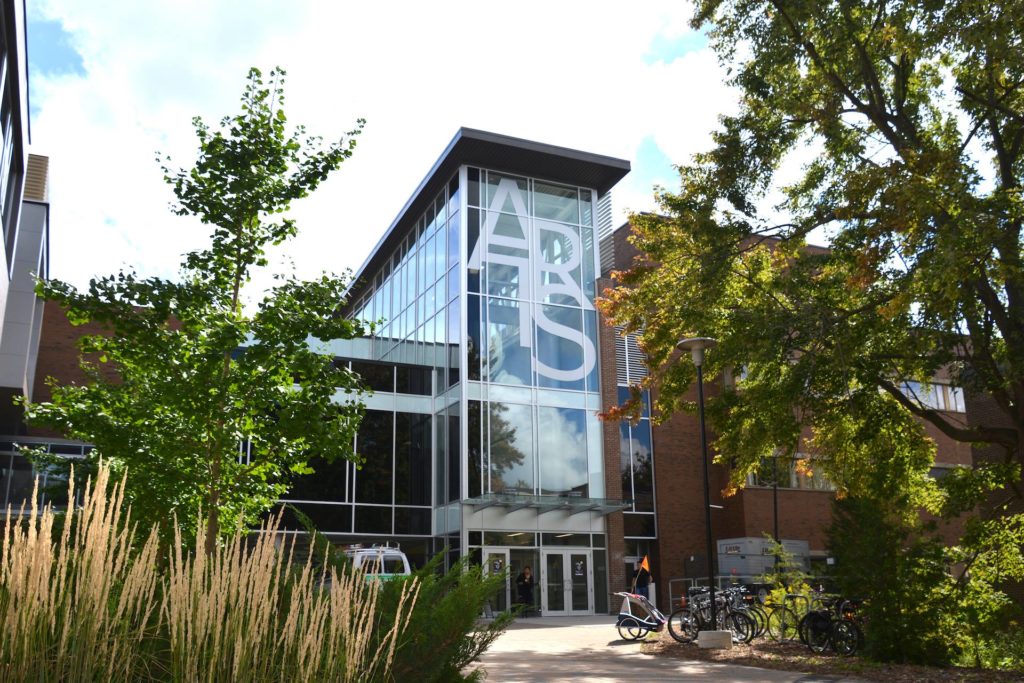 The University of Waterloo’s arts building. In addition to traditional degrees in fine arts, U of Waterloo also offers a program called Global Business and Digital Arts. Photo: Facebook / University of Waterloo.
The University of Waterloo’s arts building. In addition to traditional degrees in fine arts, U of Waterloo also offers a program called Global Business and Digital Arts. Photo: Facebook / University of Waterloo.
